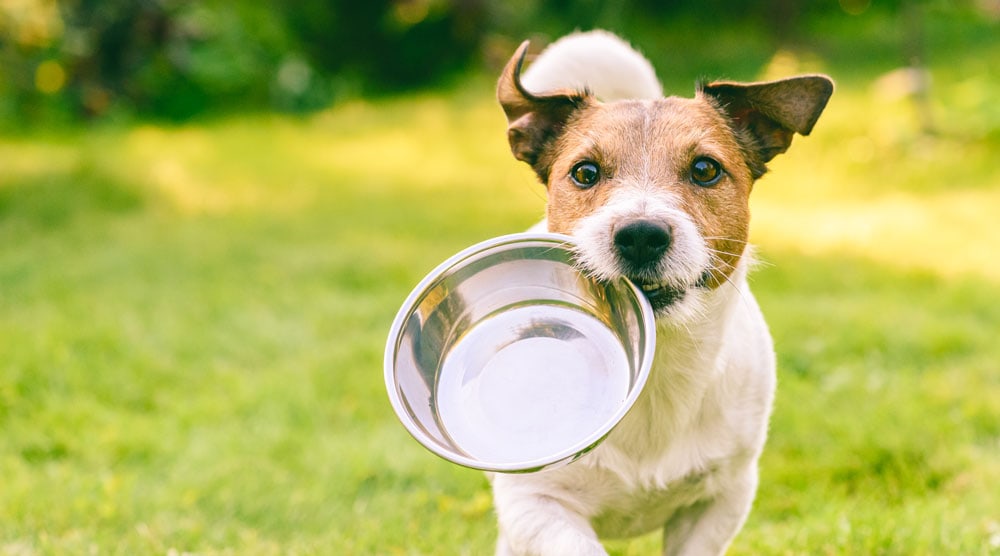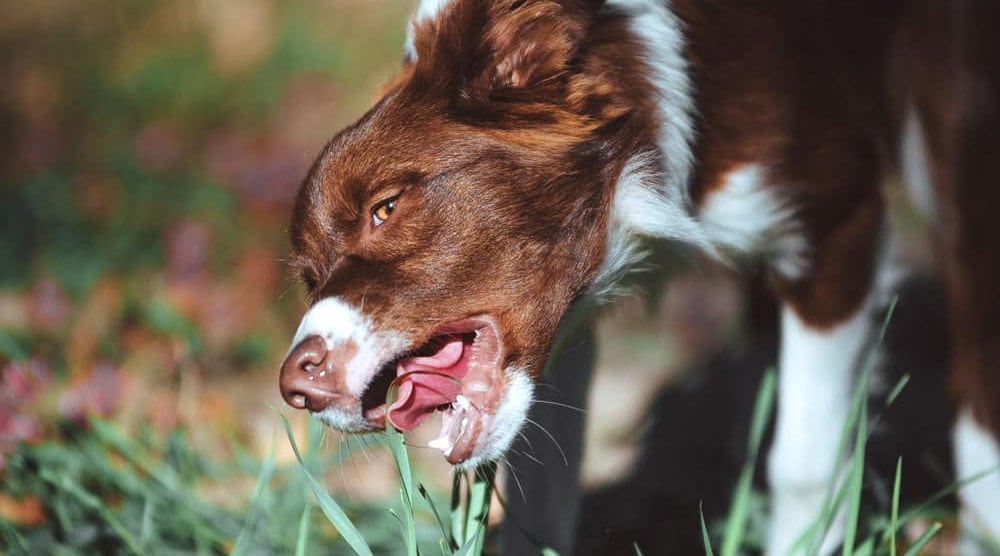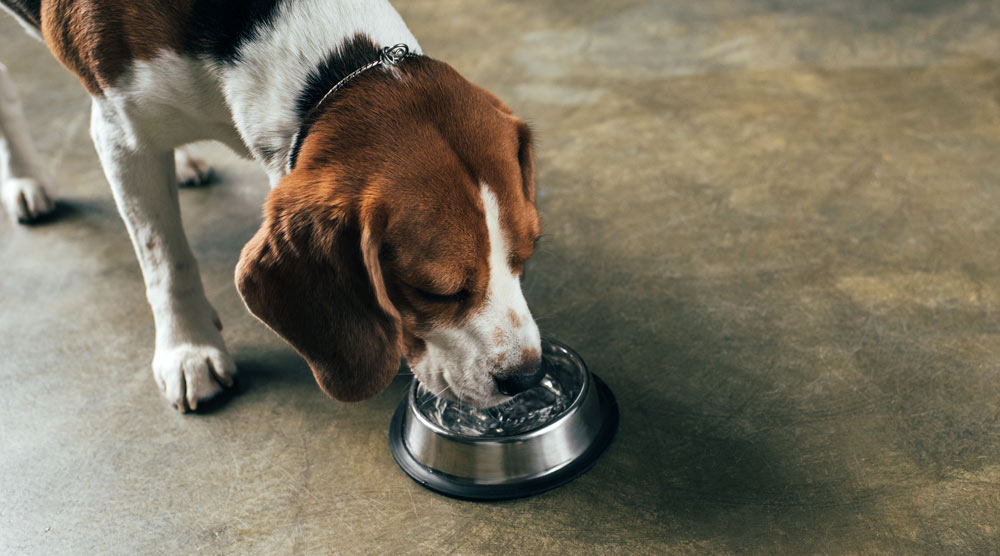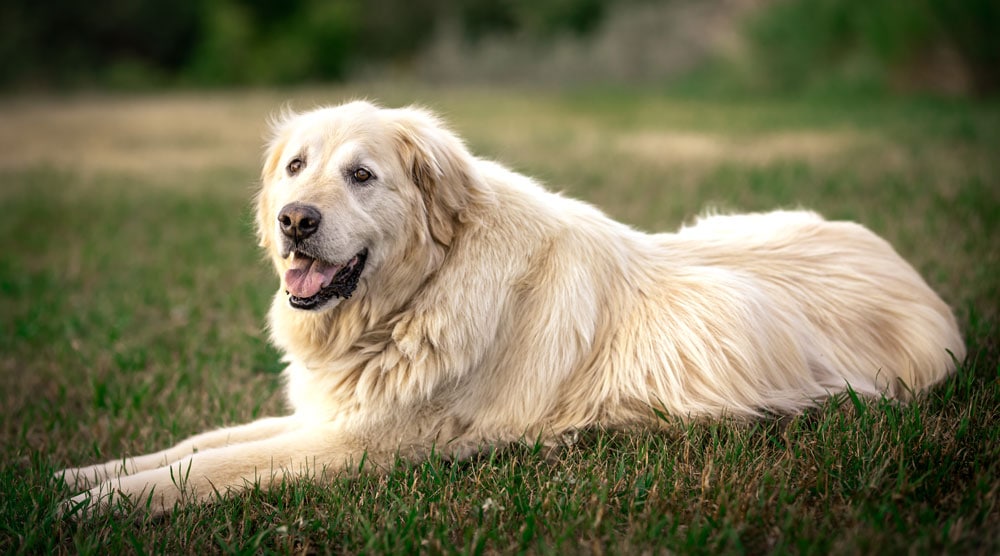You shouldn’t walk your dog close to mealtimes. Eating both before or after a walk can cause indigestion problems, leading to symptoms such as diarrhea, vomiting, and reflux. It may also increase the risk of bloat, which is a life-threatening condition.
Instead, leave a gap between your dog’s meals and walks. This ensures the digestive system can work effectively – and that your dog can enjoy their walk without feeling sluggish!
Let’s take a closer look at how long you should wait between walking and meals. We’ll also discuss whether you should feed a dog before or after walk time.
Contents
Should You Feed Your Dog Before A Walk?
You shouldn’t walk a dog soon after eating. Doing so could cause digestive problems and may even lead to serious health conditions.
As a general rule, gaps of the following duration let your dog properly digest food before walking:
- Wait at least two hours between your dog eating a full meal and a walk
- Wait at least one hour between your dog eating a large snack and a walk
- Wait at least 30 minutes between your dog eating a small snack and a walk
These are just guidelines for the best time to feed healthy dogs. For big meals, you may want to allow even more time for proper food digestion.
Don’t worry if you want to give your dog treats on walks though. Treats are essential for positive training, and they shouldn’t cause digestion problems. Just ensure the treats are spaced out and relatively small. For larger treats, consider breaking them into easily-digestible pieces.
Why Shouldn’t You Walk A Dog After Eating?
Just like humans, exercising soon after a meal could cause indigestion and an upset stomach in dogs. But unlike humans, dogs often don’t understand they should take it easy when they’ve just eaten!
The main reason for indigestion due to exercise is that it takes time for food to enter the small intestine from the dog’s stomach. While food is in the stomach, the dog is more likely to suffer from digestive issues if they go on a walk.
This can cause symptoms such as nausea, stomach cramps, diarrhea, acid reflux, and vomiting. So, it’s important to leave a gap between feeding your dog and walking.
Additionally, many people believe that exercise after eating can increase the risk of your dog developing bloat. Bloat is a serious condition involving the stomach twisting, which can cause death in just a few hours if it isn’t treated.
There’s still debate about whether exercise after eating actually causes bloat. Still, if there’s even a small reduction in the risk of bloat, then it makes sense to leave a gap between eating and a walk.
Note: Bloat causes symptoms such as distress, a swollen stomach, retching, and pain in the abdomen. You should take your dog straight to the vet if you notice any of these symptoms, as bloat needs urgent medical care.
How Long Should You Wait Before Feeding Your Dog After Exercise?
You also shouldn’t feed your dog soon after a walk.
It’s OK to walk your dog when they have an empty stomach. But after walking, your dog will probably be hot, panting, and have an elevated heart rate. This can affect digestion and cause an upset stomach – especially if your pet eats a big meal.
Instead, wait around 30-60 minutes before feeding your pup. By this time, your dog should have cooled down, and their heart rate returned to normal.
Is It Better To Feed Your Dog Before Or After A Walk?
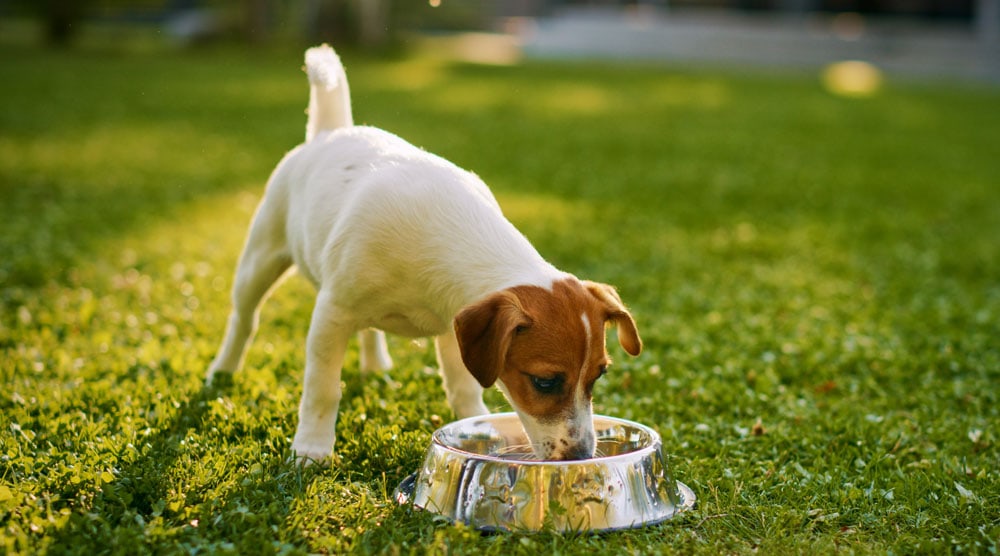
There’s no right or wrong time to feed your dog. As long as you leave enough time between vigorous exercise and eating, it’s safe to feed your pet before or after their walk.
It’s more important to have a consistent feeding and potty schedule. Dogs often get stressed if they don’t know when their next meal is coming, so creating a routine helps your pet to relax. Regular feeding times also aid with digestion.
Another consideration is how many meals to feed your dog.
You should always discuss your dog’s feeding schedule and diet with a vet. But it’s usually recommended to split your dog’s food into two smaller meals, rather than a single large meal.
This is because large meals are more difficult to digest and could increase the chance of bloat. If your pet is a fast eater, it’s also important to slow them down using a slow feeder or puzzle feeder.
Aside from slowing down mealtimes, make sure your dog has access to water throughout the day. This stops your dog from gulping down loads of water after a meal, which can cause vomiting and may even risk bloat.
What Is Bloat (Gastric Dilatation-Volvulus)?
We’ve mentioned bloat (Gastric Dilatation Volvulus or GDV) earlier in the article, but it’s a serious condition all dog owners should be aware of.
Bloat starts when gas builds up in the stomach. As the gas expands, there’s a risk that the stomach twists, which cuts off both the exit and entrance to the stomach. This is a life-threatening situation that requires urgent veterinary care.
There are many serious issues once the stomach twists. For example, the expanded stomach can put pressure on blood vessels, which cuts off blood flow to the heart and other vital organs. As the body can’t digest food, toxic products also start to build up in the blood, leading to shock.
It’s estimated that 5.7% of dogs develop GDV during their lifetimes. However, big, deep-chested breeds are more likely to suffer from the condition than smaller dogs. Examples of breeds that are most at risk include Irish setters, great danes, and saint bernards.
Quick treatment is essential if a dog has bloat. Symptoms for dog parents to watch out for include:
- Restlessness or pacing
- Drooling
- Dry heaving (sometimes bringing up mucus or foam)
- Swollen belly
- Whining
- Panting
- Shallow breathing
- Collapse
The only way to accurately diagnose the stage of bloat is with an x-ray. So, if you notice any of these symptoms, take your dog immediately to the vet. With early treatment, the majority of dogs survive GDV.
Does Exercise After Eating Really Cause Bloat?
It’s still not known exactly what triggers bloat, but research has uncovered factors that can increase the risk.
One study found a link between canine bloat and factors such as age, breed, eating quickly, and the height of the dog’s food bowl (higher bowls increase the risk). Dogs that eat only one meal a day, are anxious, male, or have a family history of bloat are also more likely to suffer from the condition.
Surprisingly, the study didn’t find a link between bloat and whether the dog ate before or after a walk.
This doesn’t mean feeding your dog after or before a walk definitely doesn’t increase the risk of bloat though – there is still more research that needs to be done. As there are other downsides to feeding close to walk time, it’s still best to leave a long gap.
Here are some other tips for reducing the risk of bloat:
- Split meals into two smaller portions during the day, rather than one large meal (if you have a puppy, they will need to be fed more frequently than this.)
- Take steps to reduce anxiety or fear triggers. In the study above, it was found that fearful or anxious dogs were at greater risk of bloat.
- Prevent your dog from eating too quickly. A puzzle feeder can be a great way to slow down your dog’s mealtimes.
- Avoid raising the height of your dog’s food and water bowls. Raised bowls were often recommended for dogs at risk of bloat, but the study above found they can actually increase the risk.
Summary
It’s important not to walk your dog less than two hours after a big meal. Doing so risks indigestion and may increase the chance of bloat. You also shouldn’t feed your pet sooner than 30-60 minutes after a walk, depending on how intense the exercise was.
However, assuming you leave enough time between a walk and eating, it’s fine to feed a healthy adult dog either before or after exercise.
Try to keep mealtimes consistent and split your dog’s feed into two smaller portions, as this decreases the risk of bloat. If your dog is a fast eater, then consider using a slow feeder or puzzle toy to slow them down.
Do you have any questions about whether you should feed your dog before or after a walk? Please let us know in the comments section.
